#World Meteorological Organization (WMO)
Explore tagged Tumblr posts
Text
World has hottest week on record

View On WordPress
#climate#climate change#global warming#heat#meme#memes#news#record#records#summer#warm period#weather#wmo#world#world meteorological organization
11 notes
·
View notes
Text
2024 likely be hottest year on record, climate agency says
EU space programme believes 2024 will “almost certainly” be the hottest year on record. Climate change service Copernicus said 2024 marks a “new milestone” and should raise ambitions at the COP29 climate summit.
The Copernicus report said 2024 is likely to be the first year in which it will be more than 1.5 °C (2.7F) hotter than before the industrial revolution, a level of warming that has alarmed scientists. Dr. Samantha Burgess, deputy director of the Copernicus Climate Change Service, said:
This marks a new milestone in global temperature records and should serve as a catalyst to raise ambition for the upcoming climate change conference.
Scientists found that global temperatures over the past 12 months were 1.62C higher than the average for the 1850-1900 period, when humanity began burning huge amounts of coal, oil and gas.
In their monthly climate bulletin, they noted that October 2024 was the second warmest October on record, second only to October 2023, when temperatures were 1.65C above pre-industrial levels. It was the 15th month in the last 16 to exceed the 1.5C mark.
World leaders have promised to stop the planet heating up by 1.5C by the end of the century, but so far about twice that amount is underway.
Scientists say one year over the threshold does not mean they have missed their target, as temperature rises are measured in decades rather than years, but warn it will put more people and ecosystems on the brink of survival. Carlo Buontempo, the director of Copernicus, said:
Our civilisation never had to cope with a climate as warm as the current one. This inevitably pushes our ability to respond to extreme events – and adapt to a warmer world – to the absolute limit.
Copernicus’ findings are based on billions of meteorological measurements from satellites, ships, aircraft and weather stations. The temperature analyses in the ERA5 dataset on which the bulletin relies are slightly different from other known datasets used by climate scientists in the US and Japan.
Year of extreme weather events
The scientists also found that Arctic sea ice reached the fourth highest monthly extent for October, 19 per cent below average, while Antarctic sea ice extent reached the second highest for October, 8 per cent below average.
Researchers pointed to the heavier-than-normal rains that hit much of Europe, including Spain, where flash floods killed more than 200 people as they swept over villages and inundated homes with mud.
Last week, the World Meteorological Organisation (WMO) found that concentrations of air pollutants causing the planet to heat up have reached record levels in 2023. The study found that carbon dioxide is accumulating faster than at any time in human history, with concentrations rising by more than 10 per cent in just two decades, warming the planet and intensifying extreme weather. Buontempo added:
The most effective solution to address the climate challenges is a global commitment on emissions.
Read more HERE

#world news#news#world politics#climate#climate change#climate crisis#climate action#climate catastrophe#global warming#cop 29#severe weather#extreme temperatures#world meteorological organization#wmo
0 notes
Text

World Meteorological Day is celebrated worldwide by the meteorological community every year on March 23 to commemorate the organization of WMO. Each year a different theme is chosen for the occasion. WMO was designated a specialized agency of the United Nations System in 1951. #WorldMeteorologicalDay Build your brand with digital media & take the benefits of social media branding contact Media Heights. By Mediaheightspr.com #Inboundmarketing #MEDIAHEIGHTS #digitalmarketingcompany #searchengineoptimization #content #instagrammarketing #advertisingagency #web #MEDIAHEIGHTSPRCOM #best #public #relation #agency #in #chandigarh #mohali #punjab #north #india #buildingrelationships #globally #customer #internetbanding — at media heights #smo #branding #facebook #twitter #marketingonline #brand #searchengineoptimization #internetmarketing #follow #digitalagency #marketingagency #motivation #digitalmarketingtips #onlinebusiness #websitedesign #marketingonline #brand #searchengineoptimization #content #instagrammarketing #advertisingagency #web #technology #onlinebranding #branding360degree #SEO #SEObrandingagency #websiteranking #websitetrafic #Digitalmarketing #mediaheights #OnlineAdvertising #instagrammarketing #advertisingagency #web #marketingonline #brand
#World Meteorological Day is celebrated worldwide by the meteorological community every year on#March 23 to commemorate the organization of WMO. Each year a different theme is chosen for the#occasion. WMO was designated a specialized agency of the United Nations System in 1951.#WorldMeteorologicalDay Build your brand with digital media & take the benefits of social media branding contact Media Heights. By Mediahe#Inboundmarketing#MEDIAHEIGHTS#digitalmarketingcompany#searchengineoptimization#content#instagrammarketing#advertisingagency#web#MEDIAHEIGHTSPRCOM#best#public#relation#agency#in#chandigarh#mohali#punjab#north#india#buildingrelationships#globally#customer#internetbanding — at media heights#smo#branding#facebook
1 note
·
View note
Text
Catalyzing Transformative Change: Science, Academia and the Journey to 2030.
The objective of the side-event is to identify and promote concrete opportunities and partnerships for science and academia to accelerate transformations in high impact areas for implementing the 2030 Agenda for Sustainable Development.
Lead Facilitators:
UN DESA, in collaboration with:
Sustainable Development Solutions Network (SDSN)
International Science Council (ISC)
World Meteorological Organization (WMO)
United Nations Development Programme (UNDP)
Representatives of the Secretary-General's 10-Member-Group of High-level Representatives of Civil Society, Private Sector and Scientific Community to support the UN Technology Facilitation Mechanism
The 2030 Agenda for Sustainable Development stands as a ground-breaking global roadmap for addressing the most pressing challenges facing humanity. At the half-way point to 2030, science, technology and innovation hold enormous promise for enabling the kinds of transformations needed to accelerate progress on the Sustainable Development Goals (SDGs) –in energy systems, food systems, education, digital infrastructure, just economies, nature and the global commons and other crucial areas as indicated in the Special Edition of the SDG Report and the Global Sustainable Development Report. Addressing institutional and other barriers to knowledge and technology sharing and revolutionizing science, technology and innovation (STI) for sustainability can support a global enabling environment for the SDGs complementing financial reforms and a surge in SDG financing.
The objective of the event is to identify and promote concrete opportunities and partnerships for science and academia to accelerate transformations in high impact areas for implementing the 2030 Agenda for Sustainable Development. By bringing together policymakers, researchers, academics, and other stakeholders, the event will foster dialogue, share best practices and identify actionable strategies to advance the implementation of the SDGs. The event will also aim to help advance commitments in the SDG Summit Political Declaration for bridging the science, technology and innovation divides and supporting the responsible use of science, technology, and innovation as drivers of sustainable development.
---
To maximize the SDG Summit's impact, the Secretary General is convening an SDG Action Weekend, which will generate opportunities for stakeholders, UN entities, and Member States to convene inside the United Nations Headquarters and set out specific commitments and contributions to drive SDG transformation between now and 2030.
The SDG Action Weekend will consist of the SDG Mobilization Day on Saturday, 16 September, and the SDG Acceleration Day on Sunday, 17 September at UNHQ in New York.
The SDG Mobilization Day (16 September) will create an opportunity for stakeholders from all sectors to convene inside the United Nations Headquarters and mobilize towards an ambitious SDG Summit and UN General Assembly High-Level Week.
The SDG Acceleration Day (17 September) will be centred around the UN High-Impact Initiatives
The SDG Summit on 18-19 September will mark the mid point of the SDGs. It must secure the breakthroughs and momentum needed to change course and achieve the SDGs by 2030. To maximize the Summit's impact, the Secretary General is convening an SDG Action Weekend, which will generate opportunities for stakeholders, UN entities, and Member States to convene inside the United Nations Headquarters and set out specific commitments and contributions to drive SDG transformation between now and 2030.
#revolutionizing science#technology and innovation (STI)#knowledge and technology sharing#Sustainable Development Solutions Network (SDSN)#International Science Council (ISC)#United Nations Development Programme (UNDP)#World Meteorological Organization (WMO)#Partnership for science#science#academia#sdg4#stakeholders#SDG Action#agenda 2030#responsible use#innovation#plenary sessions
0 notes
Text
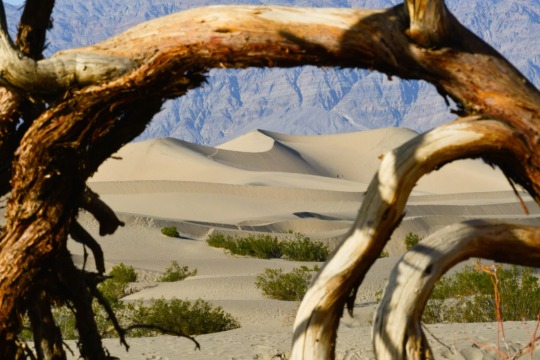
Hikers are seen in the distance at the Mesquite Sand Dunes in Death Valley National Park, California. This rugged desert landscape holds the world's record for the hottest air temperature—134°F in 1913. Tourists still flock here to experience the blistering heat. Photograph By Raul Touzon, National Geographic Image Collection
How Did Death Valley 🏜️ Gets Its Name? Not From The Heat
In December 1849, a group of settlers seeking their fortunes stumbled upon this inhospitable valley. The few who made it out alive assigned the haunting moniker.
— By Erin Blakemore | July 25, 2023
As a heat wave continues to blanket the Northern Hemisphere, tourists are making pilgrimages to the hottest place on Earth—Death Valley, California—in hope of experiencing a new world-record high temperature. The valley already holds the record for hottest air temperature ever recorded, a whopping 134°F in 1913.
But if they think the valley was named after its scorching summer temps, they’re wrong—it actually got its name from a winter disaster. Here’s how Death Valley got its name, and why it continues to lure visitors with its extreme weather and barren landscape.
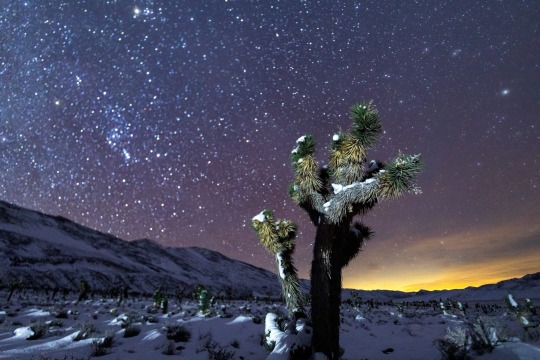
Photographing Death Valley’s starry skies shines a light on pollution. A national park artist-in-residence captures the fragility and beauty of the desert at night. August 20, 2020! As an artist-in-residence at Death Valley National Park, photographer Harun Mehmedinović captured images of its night skies and increasing light pollution. In this snowy shot, he caught both stars and, on the right, the glow of the city of Las Vegas. Photograph By Harun Mehmedinović
Inside A Desolate Desert
Located in southeastern California near the Nevada border, Death Valley is nestled in the northern Mojave Desert between four mountain ranges: the Panamint Range to the west, the Amargosa Range to the east, the Grapevine Mountains to the north, and the Owlshead Mountains to the south.
The area’s original inhabitants, the Timbisha Shoshone, lived in harmony with the valley for millennia. But when European settlers encountered it during their westward migration, they were flummoxed by the landscape. Though surrounded by mountain ranges, the valley is situated at the lowest elevation in the United States. The alkaline desert floor is bone dry and lacks vegetation, while the surrounding mountains trap the heat reflected by the sparse desert floor—making it blindingly hot in the summer and inhospitable even in winter.
Even before gold was discovered there in 1849, California attracted white settlers searching for a new life filled with natural riches. Many of these emigrants were completely unprepared for the arduous trip across both mountain and desert—and some fell victim to people who falsely claimed they knew the safest, fastest routes.
In one particularly famous case in 1846, a group of pioneers known as the Donner Party became snowbound after following the shortcut that a booster named Lansford Hastings had advertised. Stuck in the Sierra Nevadas, some of these pioneers eventually resorted to cannibalism and lost nearly half of their group to starvation and exposure.
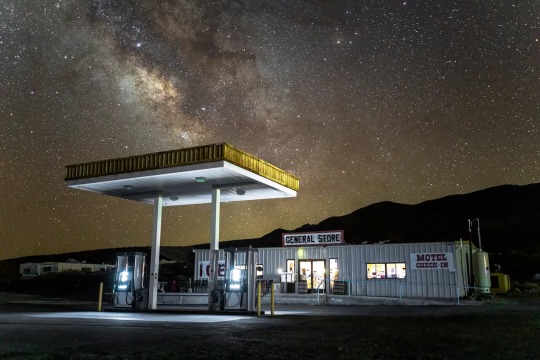
Photographing Death Valley’s starry skies shines a light on pollution. A national park artist-in-residence captures the fragility and beauty of the desert at night. August 20, 2020! The Milky Way looks brighter above Death Valley’s Panamint Springs thanks to the dim lighting at this gas station. Mehmedinović says the image shows the benefit of cutting out excessive light around national parks. Photograph By Harun Mehmedinović
On The Trail To Death Valley
Despite the Donner Party disaster—and the fact that they lacked familiarity with the terrain—boosters and wagon train leaders still attempted to find shortcuts on their journeys to California, especially after gold was discovered there.
In October 1849, members of trail leader Jefferson Hunt’s Mojave San Joaquin Company wagon train grew impatient with Hunt’s pace and his preferred route, known as the Old Spanish Trail. Some worried they’d be stuck in the mountains during the winter like the Donner Party if they didn’t move more quickly. They briefly convinced Hunt to try an alternative route, but Hunt returned from a reconnaissance mission nearly dead of thirst and told them he’d keep to the Old Spanish Trail.
A subset of the party still thought they could find a path west across the Mojave Desert, however—and when they met up with another, smaller party on the trail, they were shown a hand-drawn map of a cutoff that was endorsed, they were told, by some of the region’s most experienced trappers and mountaineers. After Hunt refused to take the shortcut, which would shave 500 miles and potentially months off the journey, much of the party broke off to try out the supposedly superior route.
At first, it seemed like they’d made the right choice: travel was easy, and they made good time. But soon they encountered more and more inhospitable terrain, and increasing disputes about how to proceed. One group headed toward a nearby mountain in hopes of finding water. The other, a group of younger, unmarried men who called themselves “Jayhawkers,” broke off into their own party and attempted to press due west to find the mountaineers’ advertised trail—a route that, it turns out, didn’t really exist.
As both groups journeyed, water became harder to find, and many turned back in search of Hunt rather than face the coming winter in the deadly Sierras. “Grass there is scarce, wood there is none,” wrote Jayhawker Sheldon Young of the landscape. “It is a dubious looking country.”
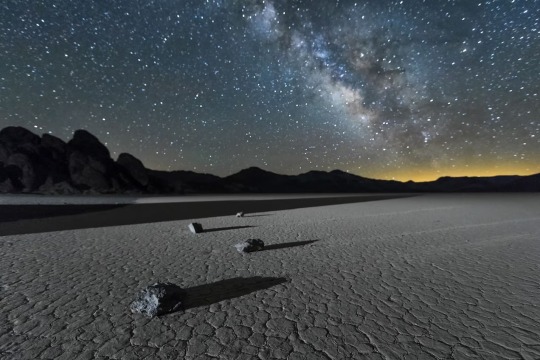
Photographing Death Valley’s starry skies shines a light on pollution. A national park artist-in-residence captures the fragility and beauty of the desert at night. August 20, 2020! Light pollution from cities can encroach on rural areas. Here, in Mehmedinović’s photograph of Death Valley’s Racetrack Playa, the glow on the right comes from Las Vegas, more than 200 miles away. Photograph By Harun Mehmedinović
Disaster Strikes
Weak and exhausted, in December 1849 both groups eventually entered a massive valley filled with salt flats and surrounded by mountains on all sides. Water was scarce in the desert valley; they were only able to locate highly alkaline water sources.
The Jayhawkers slaughtered many of their own oxen to eat and walked across the valley, eventually finding a Native American who guided them to safety. The other party tried going the other direction. As they pressed onward, this time another group of men decided to strike out on their own, and would ultimately die of exposure along their preferred trail.
On the verge of dehydration, the remaining members of the original party were briefly saved by a snowstorm. But over time, oxen dropped dead from thirst and exhaustion, and several men died. Finally, all but a few of the men broke off find their way over the mountains. The others waited patiently at the bottom of the valley.
Finally, after more than a month, the remaining party members—mostly women and young children—were rescued by two young men they’d sent off to get supplies. As they made their final crossing of the Panamint Mountains, one of the party members is said to have turned toward the valley and said “Goodbye, Death Valley.” Overall, it took the shortcut seekers more than four months to find their way to the part of California they sought.

Photographing Death Valley’s starry skies shines a light on pollution. A national park artist-in-residence captures the fragility and beauty of the desert at night. August 20, 2020! "These images are meant to evoke a sense of wonder and curiosity,” says Mehmedinović. “I see images as a gateway to a discussion on the importance of the night sky and our impact on the environment.” Photograph By Harun Mehmedinović
The Highest Temperature Recorded on Earth?
The name stuck—and today, the valley is still known as one of the most barren and dangerous places in the United States. In 1913, the ambient air temperature reportedly rose to 134 degrees, still the world-record high air temperature.
Modern-day meteorologists dispute this reading, pointing out that the temperature was not in line with that of other nearby places and that even freak “hot spots” in the valley cannot account for those variations.
“It is possible to demonstrate that a temperature of 134°F in Death Valley on July 10, 1913, was essentially not possible from a meteorological perspective,” wrote meteorologist Christopher C. Burt in a 2016 analysis. However, the World Meteorological Organization, which validates world-record temperatures, still considers the reading a world record.
The group “is always willing to investigate any past extreme record when new credible evidence is presented,” the WMO wrote in a 2020 release, but to date the analysis has never been officially invalidated.
In the meantime, as a potential new extreme approaches, the organization says it’s ready to examine and validate any new records. Death Valley may not have gotten its name from a scorching summer’s day. But 174 years after it was named, the barren, salty valley is still as inhospitable as it was in 1849.
#Death Valley 🏜️#Inhospitable#California#High Temperature World Record#Desolate Desert 🐪#Mojave Desert#Timbisha Shoshone#European Settlers#United States 🇺🇸#The Alkaline Desert 🌵#Donner Party#Sierra Nevadas#Cannibalism#Jefferson Hunt#Mojave San Joaquin#Jayhawkers#Deadly Sierras#Panamint Mountains ⛰️#Meteorologist Christopher C. Burt#World Meteorological Organization (WMO)
0 notes
Text
Protecting People from Sand and Dust Storms (WMO).
youtube
World Meteorological Organization (WMO) informational video on Sand and Dust Storms and their effects on health.
#World Meteorological Organization (WMO)#Sand and Dust Storms#Effects on health#dust storms#severe sand#Youtube
1 note
·
View note
Text
Best News of Last Week - December 11
1. Biden administration to forgive $4.8 billion in student loan debt for 80,300 borrowers

The Biden administration announced on Wednesday that it would forgive an additional $4.8 billion in student loan debt, for 80,300 borrowers.
The relief is a result of the U.S. Department of Education’s fixes to its income-driven repayment plans and Public Service Loan Forgiveness program.
2. Detroit on pace to have lowest homicide rate in 60 years this year
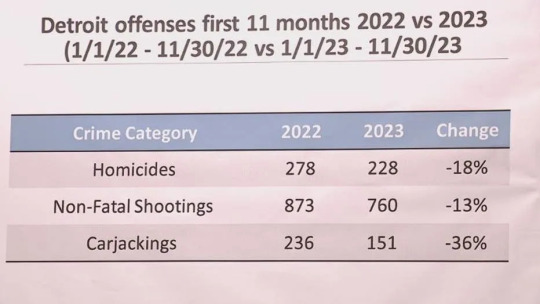
A partnership to reduce Detroit crime is being praised with the City on pace for the fewest homicides in 60 years.
"This is the day we’ve been waiting for, for a long time," said Mayor Mike Duggan. The coalition which includes city and county leaders that Detroit Police Chief James White formed in late 2021 to return the criminal justice system in Detroit and Wayne County to pre-Covid operations.
3. Dog that killed 8 coyotes to protect sheep running for Farm Dog of the Year

Over a year ago, Casper was stacked up against a pack of 11 coyotes, and he overcame them all to protect the livestock at his Decatur home. Now he needs your help.
Casper, the Great Pyrenees livestock guardian dog, needs the public to vote for him to become the American Farm Bureau's "Farm Dog of the Year: People's Choice Pup" contest.
4. Shimmering golden mole thought extinct photographed and filmed over 80 years after last sighting

De Winton's golden mole, last sighted in 1937, has been found alive swimming through sand dunes in South Africa after an extensive search for the elusive species.
5. About 40% of the world's power generation is now renewable
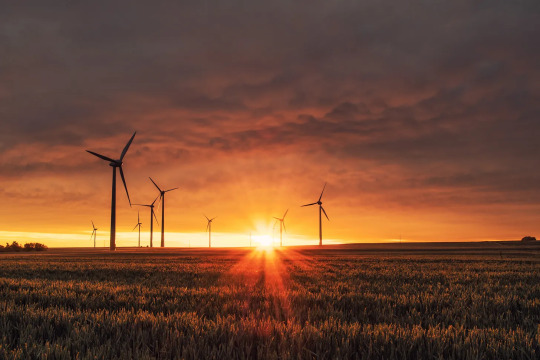
The International Renewable Energy Agency (IRENA) and World Meteorological Organization (WMO) have released their first joint report to strengthen understanding of renewable energy resources and their intricate relationship with climate variability and change.
In 2022 alone, 83% of new capacity was renewable, with solar and wind accounting for most additions. Today, some 40% of power generation globally is renewable, due to rapid deployment in the past decade, according to the report.
6. Jonathan the Tortoise: World’s oldest living land animal celebrates 191st birthday

The world’s oldest living land animal - a Seychelles giant tortoise named Jonathan - has just celebrated his 191st birthday. Jonathan’s estimated 1832 birth year predates the invention of the postal stamp, the telephone, and the photograph.
The iconic creature lived through the US civil war, most of the reign of Queen Victoria, the rise and fall of the Soviet Union, and two world wars.
7. New enzyme allows CRISPR technologies to accurately target almost all human genes

A team of engineers at Duke University have developed a method to broaden the reach of CRISPR technologies. While the original CRISPR system could only target 12.5% of the human genome, the new method expands access to nearly every gene to potentially target and treat a broader range of diseases through genome engineering.
---
That's it for this week :)
This newsletter will always be free. If you liked this post you can support me with a small kofi donation here:
Buy me a coffee ❤️
Also don’t forget to reblog this post with your friends.
908 notes
·
View notes
Text
AYESHA RASCOE, HOST:
With Spain and Portugal saying that hundreds of people have died from the heat waves sweeping through Europe this month, the longer-term view might come as a surprise. Over the past 50 years, the number of deaths attributed to weather-related disasters has actually fallen. Yes, you heard that right. The World Meteorological Organization says that the number of disasters has increased five times over the past 50 years, but the number of fatalities has fallen by two-thirds. Vox climate writer Umair Irfan has delved into this paradox and joins us now. Welcome to the program, Umair.
UMAIR IRFAN: Thanks for having me, Ayesha.
RASCOE: So how can this be? Like, how can the number of deaths be falling even though we hear the news, we see the disasters? You know, seas are rising, summers are hotter, hurricanes seem to be getting stronger. So how is it possible that deaths can be down?
IRFAN: Well, there are two main factors here. One is better forecasting - basically being able to get ahead of these disasters and then hopefully being able to get people out of harm's way. So that's really prominent with things like hurricanes and heat waves. We can actually see those things days in advance. The other side of the equation is how well we can cope with things like storms, fires and heat waves when they do occur. So we have better tools - things like sea walls. We have better building codes. We have firefighting teams that can get people out of fire zones. And so between those two aspects - you know, the better forecasting and the better tools - we've been able to avert a lot of deaths, even though the global population has grown about fourfold since the start of the 20th century.
RASCOE: Are the technological advances that you're talking about available even in less-developed areas?
IRFAN: It's not, unfortunately. And you're hitting on a very important point. You know, the WMO pointed out that about 90% of disaster-related fatalities that occur today are occurring in developing countries. And there's a huge gap in terms of being able to anticipate these disasters before they occur and being able to respond to them and being able to rebuild in their aftermath. And that really is a big shortfall that a lot of world leaders are starting to get concerned about...
You know, the World Meteorological Organization, they launched this initiative to basically say that they want the whole world covered by disaster early warning systems over the next five years. And they think that this is something that's going to be taking a big bite out of the fatalities and the casualties caused by these disasters. So I think it's worth highlighting the progress that's made, but also the progress that we still need to make.
-via NPR, July 17, 2022
Thanks so much to @gardening-tea-lesbian for the link!
#weather#extreme weather#extreme heat#natural disasters#climate anxiety#climate crisis#climate change#flood warning#disaster response#disaster relief#disaster risk reduction#hurricanes#tsunami#earthquake#wildfire#tornado#good news#hope#hope posting#climate optimism
433 notes
·
View notes
Text
“Water is the canary in the coalmine of climate change,” said the WMO secretary general, Celeste Saulo. “We receive distress signals in the form of increasingly extreme rainfall, floods and droughts which wreak a heavy toll on lives, ecosystems and economies. Melting ice and glaciers threaten long-term water security for many millions of people. And yet we are not taking the necessary urgent action.
16 notes
·
View notes
Text
Record temperatures last year pushed the global water cycle to “new climatic extremes,” according to the Global Water Monitor 2024 report. The document, produced by an international consortium led by researchers at Australian National University, states that these climatic anomalies caused devastating floods and droughts that resulted in more than 8,700 deaths, the displacement of 40 million people, and economic losses exceeding $550 billion.
The report was conducted by an international team and was led by ANU professor Albert van Dijk. It reveals that 2024 was the warmest year so far for nearly 4 billion people in 111 countries, and that air temperatures over the Earth’s surface were 1.2 degrees Celsius higher than documented at the beginning of the century and 2.2 degrees Celsius higher than at the start of the Industrial Revolution.
Van Dijk asserts that water systems around the globe were affected. “From historic droughts to catastrophic floods, these severe climate variations affect lives, livelihoods, and entire ecosystems. Water is our most important resource, and its extreme conditions are among the greatest threats we face,” he says.
The report authors analyzed data from thousands of ground and satellite stations that collect near real-time information on critical water variables, including rainfall intensity and frequency, soil moisture, and flooding.
“We found rainfall records are being broken with increasing regularity. For example, record-high monthly rainfall totals were achieved 27 percent more frequently in 2024 than at the start of this century, whereas daily rainfall records were achieved 52 percent more frequently. Record lows were 38 percent more frequent, so we are seeing worse extremes on both sides,” says Van Dijk.
The research states that, as a consequence, sea-surface temperatures rose, intensifying tropical cyclones and droughts in the Amazon basin and southern Africa. Global warming favored the formation of slower-moving storms in Europe, Asia, and Brazil, subjecting some regions—such as Valencia in Spain—to extremely high levels of rain. Widespread flash floods occurred in Afghanistan and Pakistan, while rising levels in the Yangtze and Pearl rivers in southern China damaged rice crops.
“In Bangladesh, heavy monsoon rains and the release of water from dams affected more than 5.8 million people, and at least 1 million tons of rice were wiped out. In the Amazon basin, forest fires triggered by the hot, dry weather devastated more than 52,000 square kilometers in September alone, releasing huge amounts of greenhouse gases,” Van Dijk says.
The study adds that changes in the water cycle intensified food shortages, impaired shipping routes, and disrupted hydropower generation in some regions. “We need to prepare for and adapt to inevitably more severe extreme events. That may mean adopting stronger flood defenses, developing new food production systems and more drought-resistant water supply networks,” suggests Van Dijk.
World leaders have pledged to implement measures and policies to prevent global warming from exceeding 1.5 degrees Celsius above preindustrial levels by the end of the century, but the World Meteorological Organization has pointed out that current efforts are insufficient. The WMO estimates that there is an 80 percent chance that the average global temperature will exceed 1.5 degrees Celsius above preindustrial levels again in at least one of the next five years. The projection suggests that humanity is far from meeting the goals of the Paris Agreement and raises new concerns about the progress of climate change.
Securing financial resources is another challenge. The United Nations Environment Program estimates that the funding gap for climate change adaptation is between $194 billion and $366 billion annually.
António Guterres, secretary general of the United Nations, has said that “we are teetering on a planetary tightrope. Either leaders close the emissions gap or we are hurtling towards climate disaster, with the poorest and most vulnerable suffering the most. The countdown to action has begun.”
6 notes
·
View notes
Text
The new Task Team was formed by the WMO World Weather Research Programme and the WMO Services Department with support from the United Nations Food and Agriculture Organization (FAO) and the United Nations Educational, Scientific and Cultural Organization (UNESCO).
Both the FAO and the UNESCO collaborated with WMO on the workshop, which featured case studies that use indigenous and local knowledge in agriculture in Latin America, in forestry in Southeast Asia, in fisheries and hunting in the Arctic, and in livestock management in Eastern Africa.
The case studies demonstrated the benefits of using indigenous and local knowledge to enhance uptake, use and ownership of information by smallholder farmers as well as to better target their needs. During the workshop, the Task Team defined a clear roadmap to produce a position paper to highlight the need to strengthen climate resilience by blending climate science and Indigenous and local knowledge. This will enhance information uptake and contribute to preserving cultural heritage and ensuring food security. A project proposal for co-design and co-production of climate services with Indigenous peoples and local knowledge will also be produced based on participatory approaches and cases presented at the workshop and the feedback of participants.
The Task Team’s work will contribute to upholding and including the voices of indigenous, and local communities in decision-making. The roadmap and project proposal will acknowledge the important contribution if indigenous, and local communities to effective locally-led meteorological services that enhance community-based monitoring and strengthen local languages, knowledge and cultural practices.
9 notes
·
View notes
Text
youtube
Excerpt from this story from the World Meteorological Organization:
Greenhouse gas levels surged to a new record in 2023, committing the planet to rising temperatures for many years to come, according to a report from the World Meteorological Organization (WMO). Carbon dioxide (CO2) is accumulating in the atmosphere faster than any time experienced during human existence, rising by more than 10% in just two decades.
In the course of 2023, large vegetation fire CO2 emissions and a possible reduction in carbon absorption by forests combined with stubbornly high fossil fuel CO2 emissions from human and industrial activities to drive the increase, according to the WMO’s annual Greenhouse Gas Bulletin.
The globally-averaged surface concentration of CO2 reached 420.0 parts per million (ppm), methane 1 934 parts per billion and nitrous oxide 336.9 parts per billion (ppb) in 2023. These values are 151%, 265% and 125% of pre-industrial (before 1750) levels, it said. These are calculated on the basis of the long-term observations within the Global Atmosphere Watch network of monitoring stations.
“Another year. Another record. This should set alarm bells ringing among decision makers. We are clearly off track to meet the Paris Agreement goal of limiting global warming to well below 2°C and aiming for 1.5°C above pre-industrial levels. These are more than just statistics. Every part per million and every fraction of a degree temperature increase has a real impact on our lives and our planet,” said WMO Secretary-General Celeste Saulo.
The 2023 increase of CO2 in the atmosphere was higher than that of 2022, although lower than that of the three years before that. The annual increase of 2.3 ppm marked the 12th consecutive year with an increase greater than 2 ppm.
3 notes
·
View notes
Text
DAILY DOSE: Hottest August ever recorded is official; Revenant child discovered in Poland.
HOT HOT HEAT. The World Meteorological Organization (WMO) reported that this year had the hottest Northern Hemisphere summer on record, with August as the warmest month ever documented. Temperatures in August were about 1.5°C higher than pre-industrial averages. Global oceans also reached record temperatures for three consecutive months. The surge in temperatures is attributed to human-induced…

View On WordPress
#Africa#archaeology#Asia#Australia#cancer#climate change#clinical trials#Europe#Featured#meterology#North America#South America#space exploration#technology
13 notes
·
View notes
Text
youtube
State of our Climate: New World Meteorological Organization (WMO) Update Report
3 notes
·
View notes
Text
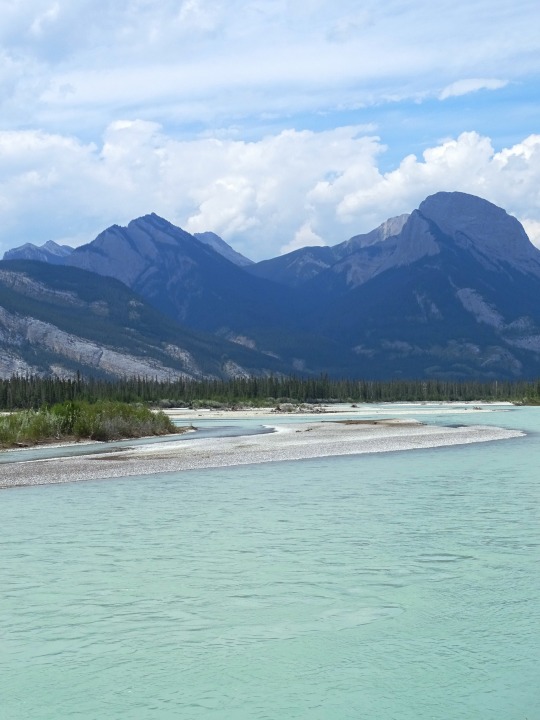
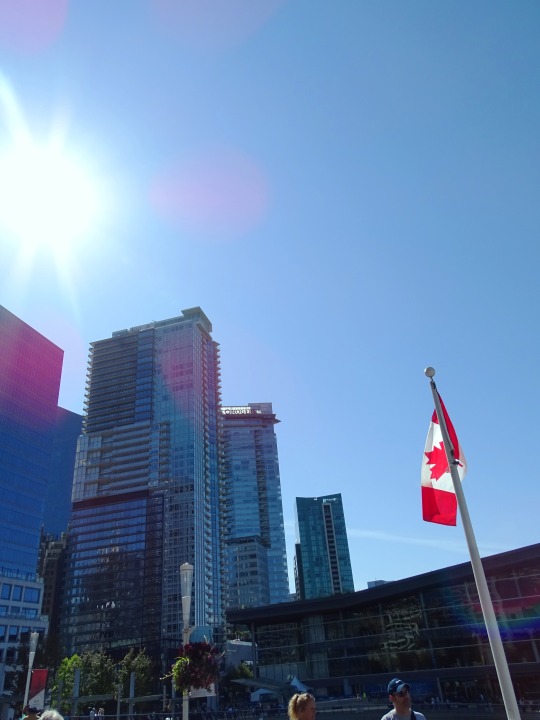


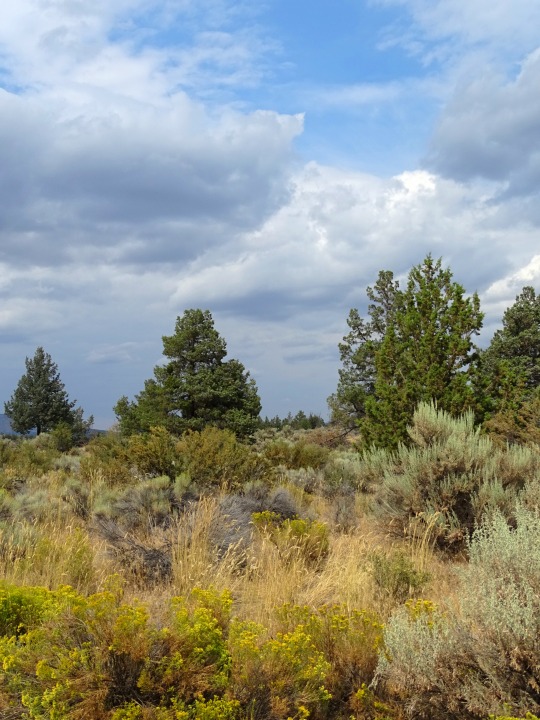

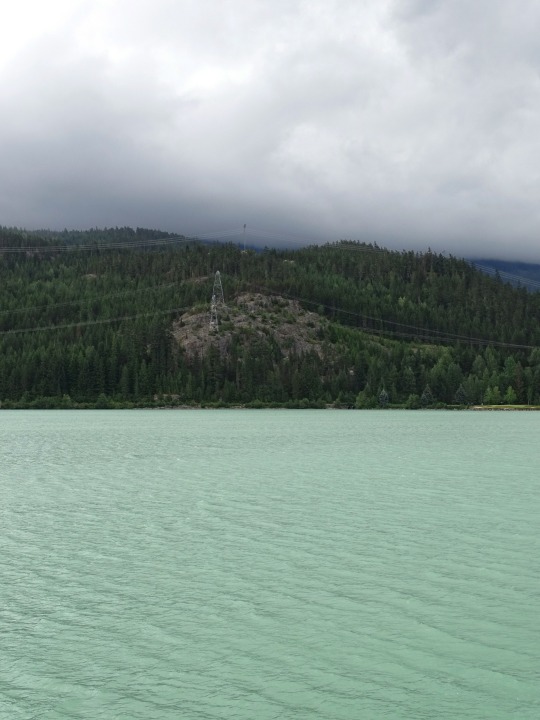
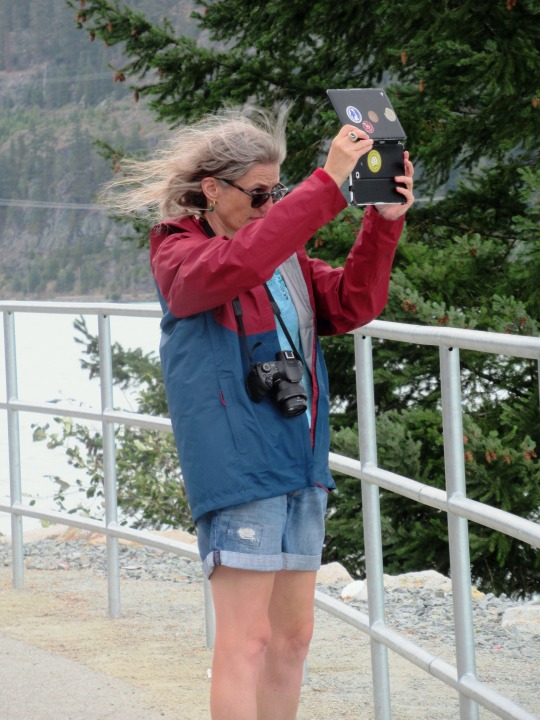
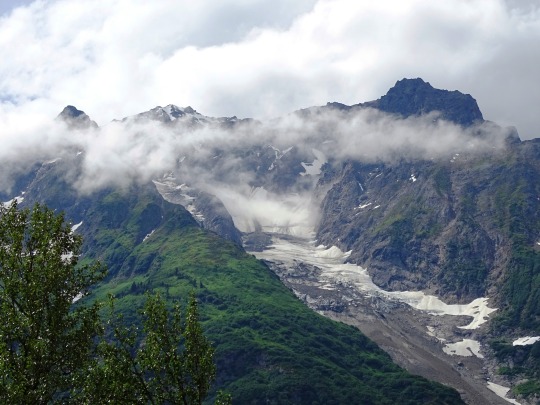

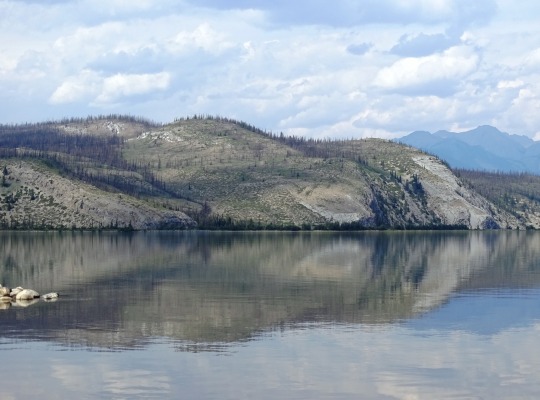

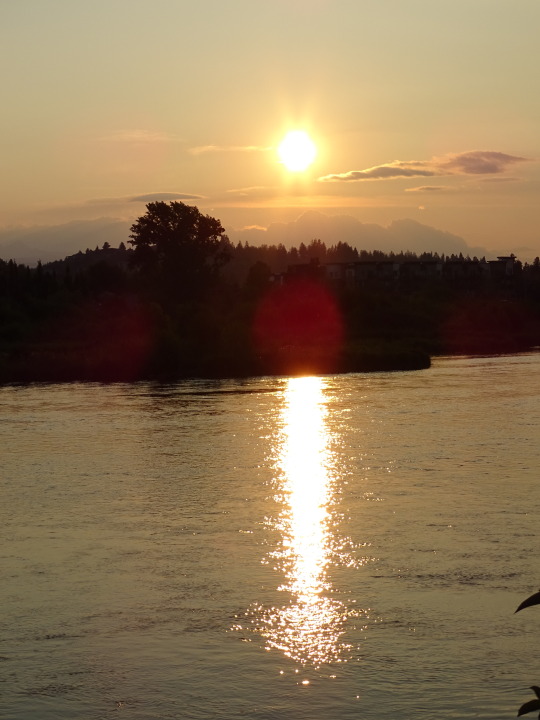
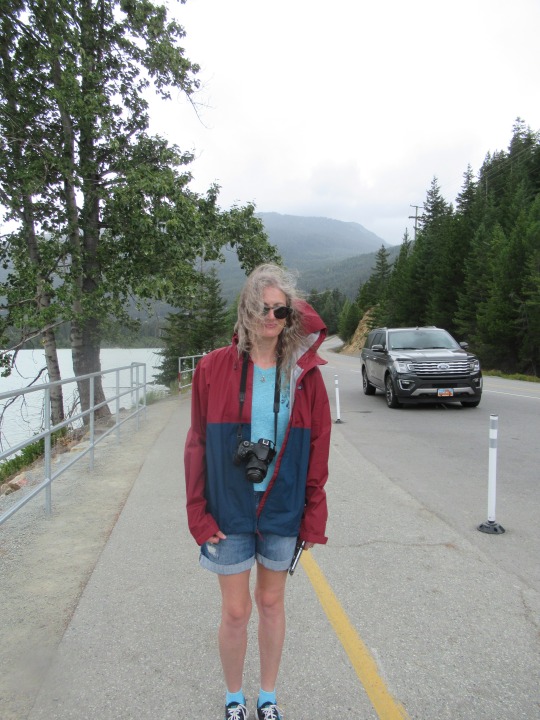
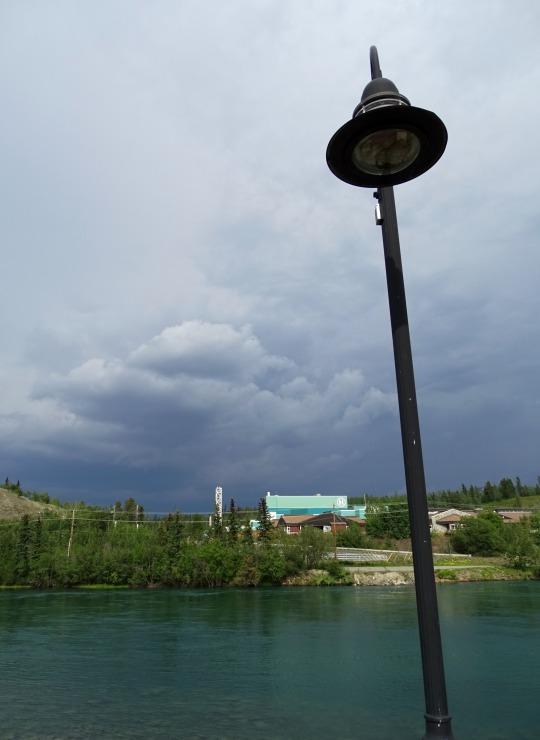

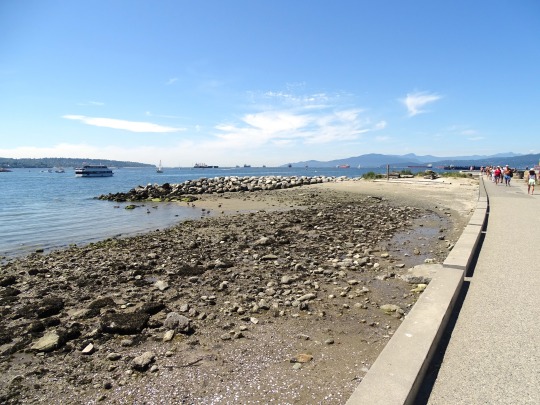

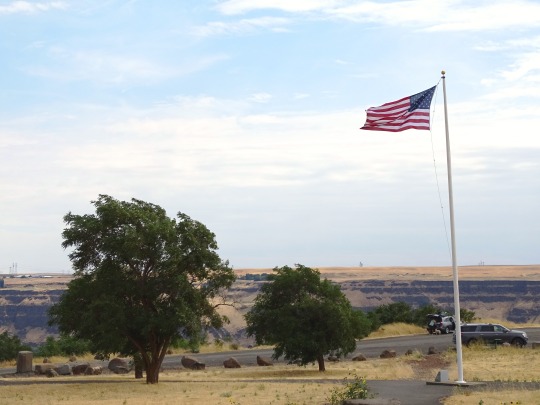
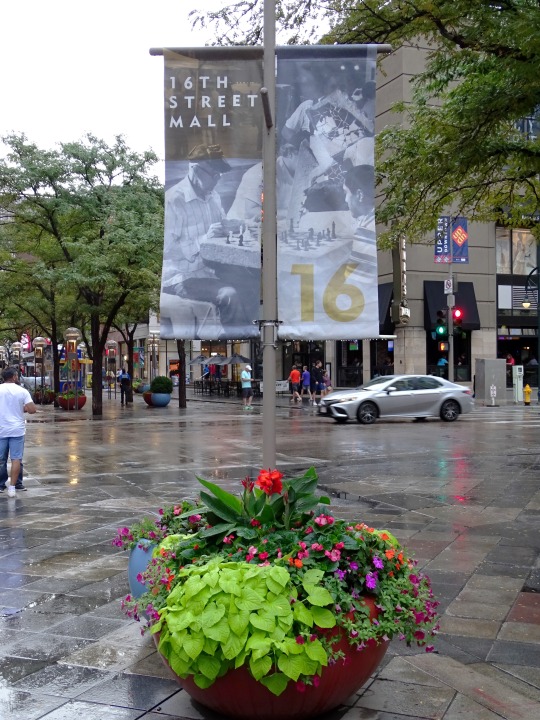






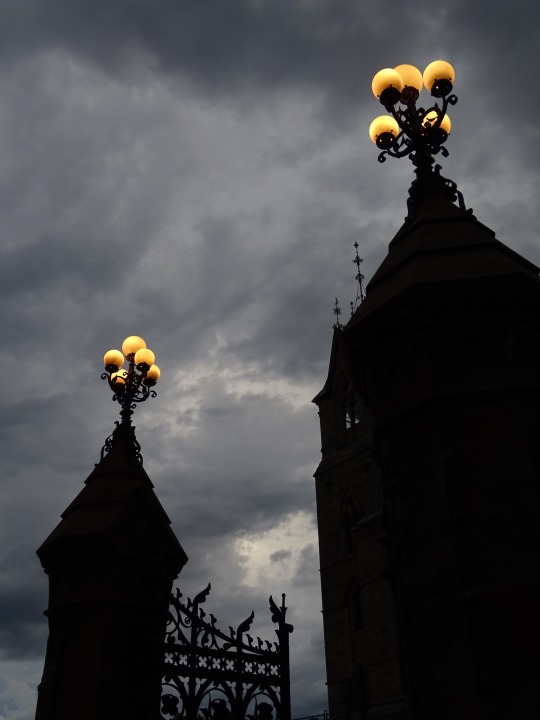

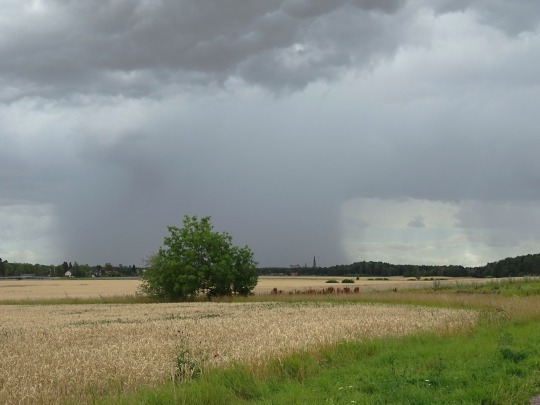
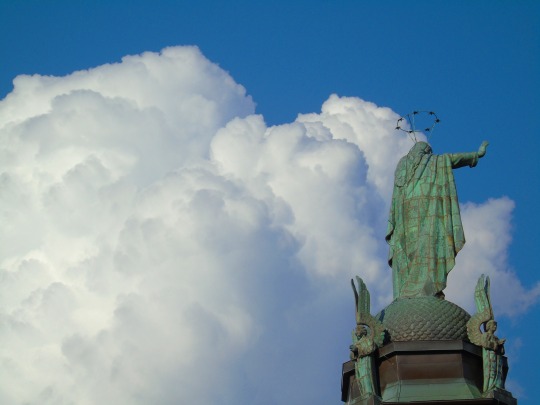
World Meteorological Day
Unraveling the mysteries of weather's patterns, and predicting its whims — a thrilling exploration of our natural world.
For those who experience the weather and climate each day, no matter what part of the world they live in, World Meteorological Day is a unique and interesting time to raise awareness for and pay attention to the importance of the weather!
History of World Meteorological Day
The study of the Earth’s atmosphere has been a fascination of scientists for thousands of years, though the progress of this discipline wasn’t significant until the 18th and 19th centuries. Weather observation networks began developing and the 20th century brought computers that made advancements in meteorology grow at a much faster pace.
In 1873, the International Meteorological Organization was formed in order to encourage those studying the science of the Earth’s atmosphere to share information between governments, cultures and geographical locations. As developments and scientific discoveries grew over the years, the people involved in tracking and learning about weather knew that collaboration was essential for gaining a full perspective beyond countries or boundaries.
After several decades, the IMO decided that they would be better able to function with the support of the governments they represented. By the late 1940s, plans were in the works to create a branch that would work as part of the United Nations, which would become the World Meteorological Organization (WMO).
World Meteorological Day was founded to celebrate the start of the World Meteorological Organization that took place on March 23, 1950. For more than 70 years, the World Meteorological Organization has been a specialized agency of the United Nations (UN) that is dedicated to cooperation and coordination between countries.
The purpose of the World Meteorological Organization is to better understand and measure the way the atmosphere of the Earth behaves, how it interacts with the oceans and lands, and the climate, weather and water distribution that results from this. And World Meteorological Day is the celebration of this group and the science behind it that impacts every human every day!
Since 1961, World Meteorological Day has worked toward raising awareness and making a difference, implementing a new theme each and every year. Some of the interesting themes over the past years have included:
Climate and Water: Count Every Drop, Every Drop Counts
Hotter, Drier, Wetter: Face the Future
Powering Our Future with Weather, Climate and Water
Weather and Climate: Engaging Youth
These and other themes have been part of the WMO’s sponsorship of World Meteorological Day which seeks to bring light and attention to the ways that weather and the environment are vital to life. And that is absolutely world celebrating!
How to Celebrate World Meteorological Day
Looking for interesting ways to get involved with celebrating World Meteorological Day? Get started with some of these ideas to take part in the day:
Pay Attention to the Weather Report
Whether looking it up online on the weather channel or watching the weather forecast on the news on television, World Meteorological Day is the perfect time for taking a look at the weather forecast! In addition to just seeing what it is like outside at the moment, perhaps it would be interesting to take a deeper look at the weather. Try to understand what some of the specialized terms are, such as Doppler technology, or high pressure and humidity. Learn a little bit along the way!
Submit a Photo for the WMO Calendar
Each year, the WMO hosts a calendar competition that allows anyone to submit a photo. This calendar competition was started in 2014 and has been growing in status and volume since that time. Winners of the WMO Calendar Competition will not only have their photos featured on the calendar for the year, but they will also have their artwork placed on the website.
To participate in the competition, photos should be artistic and of high quality, featuring images that capture the power and beauty of the elements of the Earth’s atmosphere, specifically related to weather, climate and water. This includes photos that represent the concept of protecting people from the forces of nature, as well as protecting nature from the activities of humans.
Learn More About Meteorology
World Meteorological Day is a great time to brush up on interesting information about the Earth’s atmosphere and its impact on the world around us. One way to make the day fun, and raise awareness by sharing with others, might be to learn some tidbits of trivia about the planet, weather, climate and more. Get started with some of these fun facts about meteorology:
Every sixty seconds, approximately 2,000 thunderstorms are raining down on the Earth’s surface!
Wildfires, which are typically caused by lighting and considered to be meteorological hazards or disasters, can create tornadoes that are made of fire. These are called fire whirls.
In the year 1984, it was so cold in the city of London, UK, that the River Thames froze for two months solid. This is certainly unusual weather for this area of the world.
Some places in the United States get pink snow! The pink color is tinted by a specific algae called Chlamydomonas nivalis, which is a red-tinged algae that only lives in certain cold climates, like Colorado and northern California, and can leave the snowfall with a pink tinge.
Access Resources from WMO
School teachers, community leaders and others who want to encourage the celebration of World Meteorological Day can find a variety of interesting and useful resources on the WMO web page. Here, it is possible to gain more information about the upcoming year’s WMD theme as well as other useful media to help with communication and events.
Attend World Meteorological Day Events Virtually
Each year, in honor of the World Meteorological Day, the WMO hosts events and ceremonies. Events include official addresses from members of the United Nations, panel discussions, educational speakers and much more. Following the event, those who are interested can catch the live-stream recording of the happenings on the WMO YouTube channel in English.
World Meteorological Day FAQs
What is meteorology?
Meteorology is the study of the atmosphere, particularly related to climate and weather.
What is meteorological spring?
Meteorological spring takes place on the first of March each year, the day when meteorologists and climatologists mark the beginning of spring.
How to pronounce meteorological?
The word meteorological can be pronounced: mee-tee-ur-uh-laa-juh-kl
What are meteorological disasters?
Meteorological disasters are bad things that happen related to weather, such as floods, droughts, storms, wildfires and heat waves.
Why do we need meteorological instruments?
Weather or meteorological instruments are important for a variety of industries including air travel, shipping, agriculture, and construction.
#travel#original photography#vacation#tourist attraction#landmark#cityscape#architecture#landscape#countryside#summer 2023#Alberta#Yukon#British Columbia#Canada#USA#Switzerland#Sweden#Whistler#Jasper National Park#Vancouver#Stewart#Watson Lake#Whitehorse#Yukon River#World Meteorological Day#WorldMeteorologicalDay#23 March#flora#nature
2 notes
·
View notes
Text
Unprecedented Heat: Earth Experiences Hottest June on Record, Felt in the Caribbean
By Dale C. S. Destin – Published 12 July 2023 | Introduction A new report from the European Union’s Copernicus Climate Change Service, a close collaborator with the World Meteorological Organization (WMO), has just revealed alarming weather news: June 2023 was the hottest June on record, surpassing the previous record set in 2019. This scorching month, with sea surface temperatures at…

View On WordPress
5 notes
·
View notes